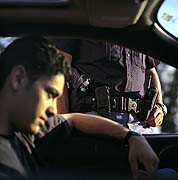
THURSDAY, Oct. 1, 2015 (HealthDay News) — More Americans are under the influence of drugs while they drive, even as drunk driving rates decline, new research shows.
In the report, 38 percent of drivers killed in accidents who were then tested had drugs in their systems, while about 42 percent of those tested for alcohol had positive results. And the number of drunk driving deaths has been sliced in half since 1980, government statistics shows.
Over one-third of the drugs identified in the tests were marijuana in some form, followed by amphetamines, at almost 10 percent, the researchers found.
“Every state must take steps to reduce drug-impaired driving, regardless of the legal status of marijuana,” Jonathan Adkins, executive director of the Governors Highway Safety Association (GHSA), said in an association news release.
Marijuana is now legal for medical use in 23 states and the District of Columbia, and it is approved for recreational use in four states and in Washington, D.C., the report authors noted. Meanwhile, prescription drug abuse in the United States has quadrupled since 1999.
The most recent roadside survey by the National Highway Traffic Safety Administration (NHTSA) found 22 percent of drivers tested positive for some type of illegal drug or medication when pulled over, the report added.
Any drug — prescription, over-the-counter or illegal — can impair a person’s ability to safely operate a vehicle, the report authors said.
“This is the first report to provide states and other stakeholders with the information they need,” Adkins said. “We look to the federal government to take a leadership role in this issue similar to that of drunk driving and seat belt use.”
The report makes a number of recommendations on how federal and state officials should tackle the issue, including: educating drivers about the risks of drugged driving; gathering and analyzing data; assessing and updating drugged driving laws; training for police, prosecutors and judges; referring offenders to treatment if needed; and continued research into how drugs impair driving ability.
“While this report summarizes the research and data available, it also highlights how much remains unknown,” report author Jim Hedlund, a former senior NHTSA official, said in the news release.
“For example, we still don’t know with certainty how much of a specific drug will cause impairment or if such a relationship can even be defined,” he said.
“Many states do not have the data to measure their drug-impaired driving scope or characteristics. The recommendations in the report will help states refine and augment their efforts to detect and deter drug-impaired drivers,” Hedlund said.
More information
The U.S. National Institute on Drug Abuse has more about drugged driving.
Copyright © 2026 HealthDay. All rights reserved.

